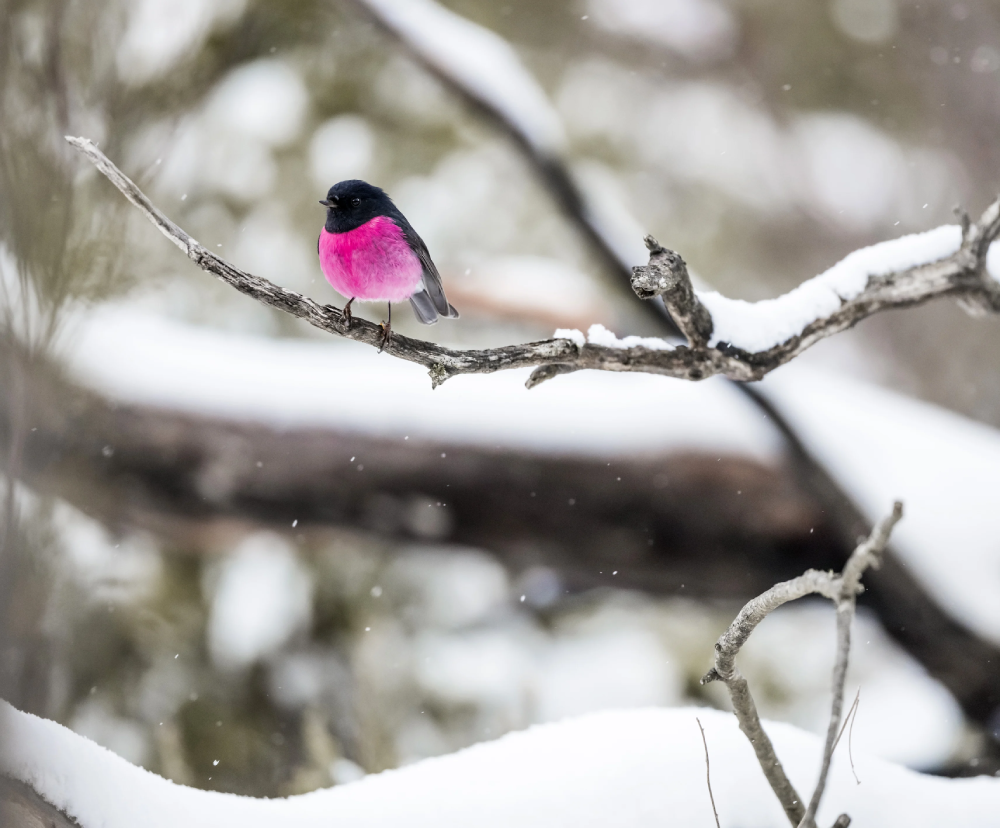Appearance and Characteristics
The Pink Robin is a member of the Australasian robin family, known for their small size, rounded bodies, and distinctive behaviors. Measuring around 10-12 centimeters in length, the Pink Robin is one of the smallest robins in Australia. Its plumage exhibits subtle shades of pink on the breast and belly, contrasting with a slate-gray back and wings. The male sports brighter pink hues, especially during the breeding season, while the female showcases a more subdued coloration, often described as a soft salmon pink.
One of the most striking features of the Pink Robin is its large, dark eyes, which lend it an appearance of perpetual curiosity. Its slender legs and fine bill are adapted for foraging in the undergrowth of dense forests, where it hunts for insects, spiders, and other small invertebrates. Despite its diminutive size, the Pink Robin possesses a melodious song, a sweet, warbling tune that echoes through the forest canopy, signaling its presence to potential mates and rivals.

Habitat and Distribution
The Pink Robin inhabits the cool, moist forests of southeastern Australia, including parts of Victoria, New South Wales, Tasmania, and South Australia. Within these regions, it prefers dense undergrowth, fern gullies, and shaded streamsides, where it can find ample cover and suitable nesting sites. Unlike some of its more adaptable relatives, such as the Eastern Yellow Robin, the Pink Robin is highly specialized in its habitat requirements, relying on pristine, undisturbed forests for its survival.
Behavior and Reproduction
Despite its charming appearance, the Pink Robin is a shy and elusive bird, often seen flitting among the shadows of the forest understory. It is primarily solitary outside of the breeding season, with individuals maintaining territories ranging from 1 to 3 hectares in size. However, during the breeding season, which typically occurs from August to January, male Pink Robins become more vocal and conspicuous as they defend their territories and court potential mates.
Nesting takes place in the spring and early summer, with the female constructing a small cup-shaped nest from moss, bark, and spider silk, often tucked away in the dense foliage of ferns or shrubs. The female typically lays 2-3 eggs, which she incubates for around two weeks until they hatch. Both parents participate in feeding and caring for the nestlings until they fledge, usually around two weeks after hatching.
Conservation Status and Threats
Despite its enchanting presence, the Pink Robin faces numerous threats to its survival, primarily due to habitat loss and fragmentation. Deforestation, logging, and urbanization have resulted in the destruction of vast swathes of its preferred habitat, leaving isolated populations vulnerable to predation, competition, and genetic isolation. Climate change poses an additional threat, altering the distribution of key food sources and increasing the frequency and severity of extreme weather events.
Conservation efforts aimed at protecting the Pink Robin and its habitat are underway, including the establishment of protected areas, habitat restoration initiatives, and research projects to better understand its ecology and behavior. Citizen science programs also play a vital role in monitoring Pink Robin populations and raising awareness about the importance of preserving Australia’s unique biodiversity.
Conclusion
In the ancient forests of Australia, where time seems to stand still and nature weaves its intricate tapestry of life, the Pink Robin flutters as a delicate thread, a symbol of resilience and beauty in a rapidly changing world. Its subtle hues and melodious song remind us of the precious diversity that enriches our planet and the urgent need to safeguard it for future generations. As we strive to protect the Pink Robin and its habitat, we also safeguard the rich tapestry of life that sustains us all.









